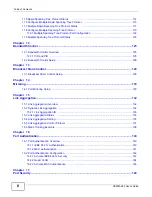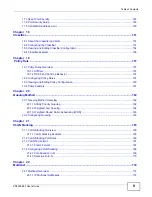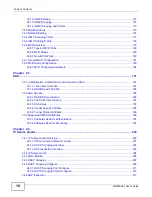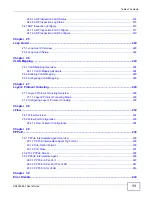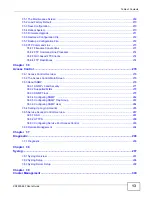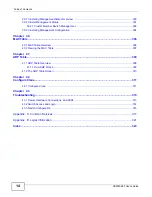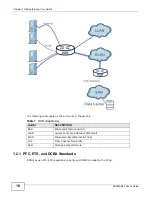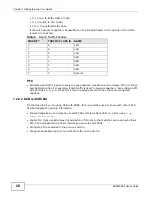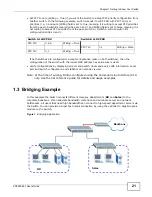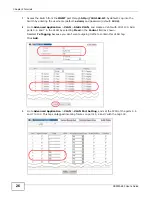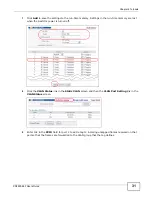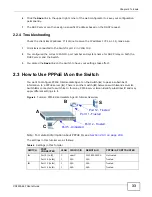
Chapter 1 Getting to Know Your Switch
XS3900-48F User’s Guide
20
• 0, 1 and 2 to traffic class 2 (LAN)
• 3, 4, 5 and 6 to ID 1 (SAN)
• 7 to 0, the default traffic class.
If there is network congestion, bandwidth can be allocated based on the priority of the traffic
received on that port.
PFC
• Estimate what traffic types are likely to cause network congestion and configure PFC with these
associated priorities. For example, if SAN traffic is likely to cause congestion, then configure PFC
with priorities 3, 4, 5, 6. It’s better if the connected peer switch has the same configured
priorities.
1.2.2.2 DCB with DCBX
Do the following if you’re using DCB with DCBX, that is, switches need to know each other’s PFC,
ETS and application priority information.
• Enable transmission and reception of LLDP PDUs (Protocol Data Unit) on a port using
lldp
admin-status tx-rx
.
• Enable TLV (Type-Length-Value) transmission of formats so that switches can read each others
ETS, PFC and application priority information sent via LLDP PDUs.
• Configure ETS as outlined in the previous section.
• Configure application priority for all FCoE traffic on the Switch.
Table 4
Bound Traffic Priorities
PRIORITY
TRAFFIC CLASS ID
NAME
0
2
LAN
1
2
LAN
2
2
LAN
3
1
SAN
4
1
SAN
5
1
SAN
6
1
SAN
7
0
Default
Summary of Contents for XS-3900-48F
Page 15: ...15 PART I User s Guide ...
Page 16: ...16 ...
Page 48: ...Chapter 2 Tutorials XS3900 48F User s Guide 48 ...
Page 62: ...Chapter 4 The Web Configurator XS3900 48F User s Guide 62 ...
Page 63: ...63 PART II Technical Reference ...
Page 64: ...64 ...
Page 227: ...Chapter 26 VLAN Mapping XS3900 48F User s Guide 227 ...
Page 320: ...Appendix A Common Services XS3900 48F User s Guide 320 ...
Page 332: ...Index XS3900 48F User s Guide 332 ...



